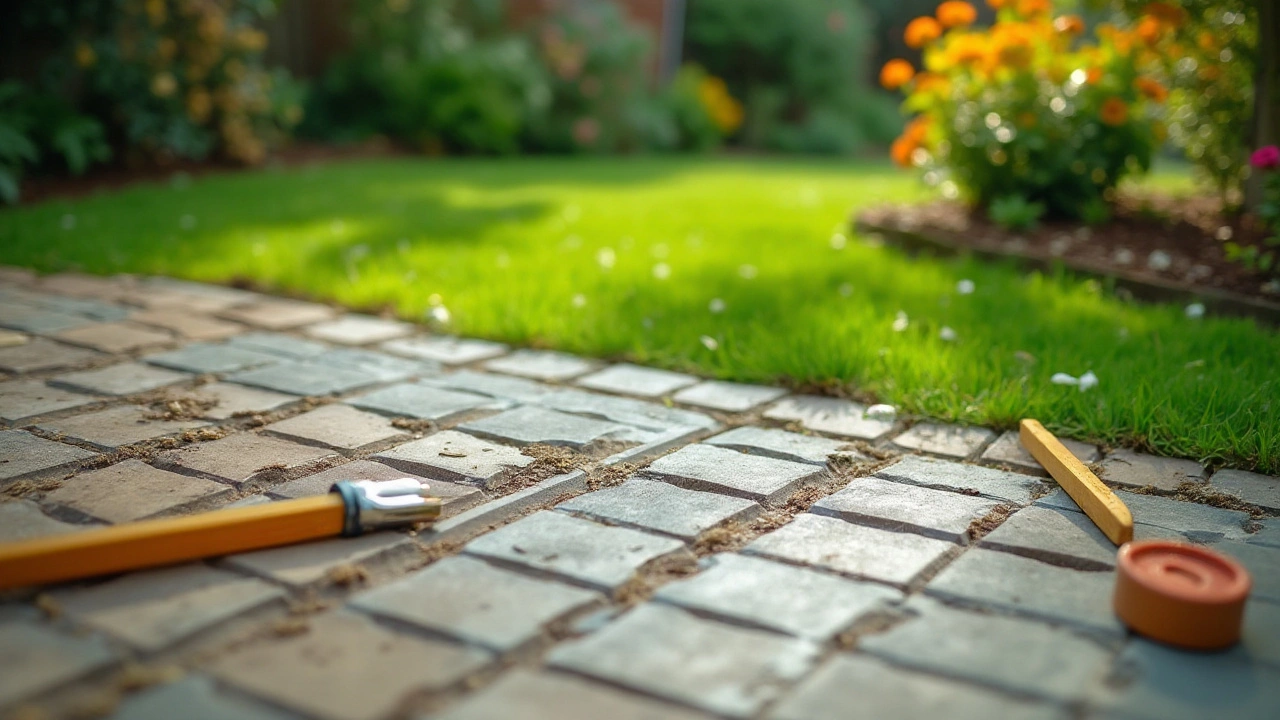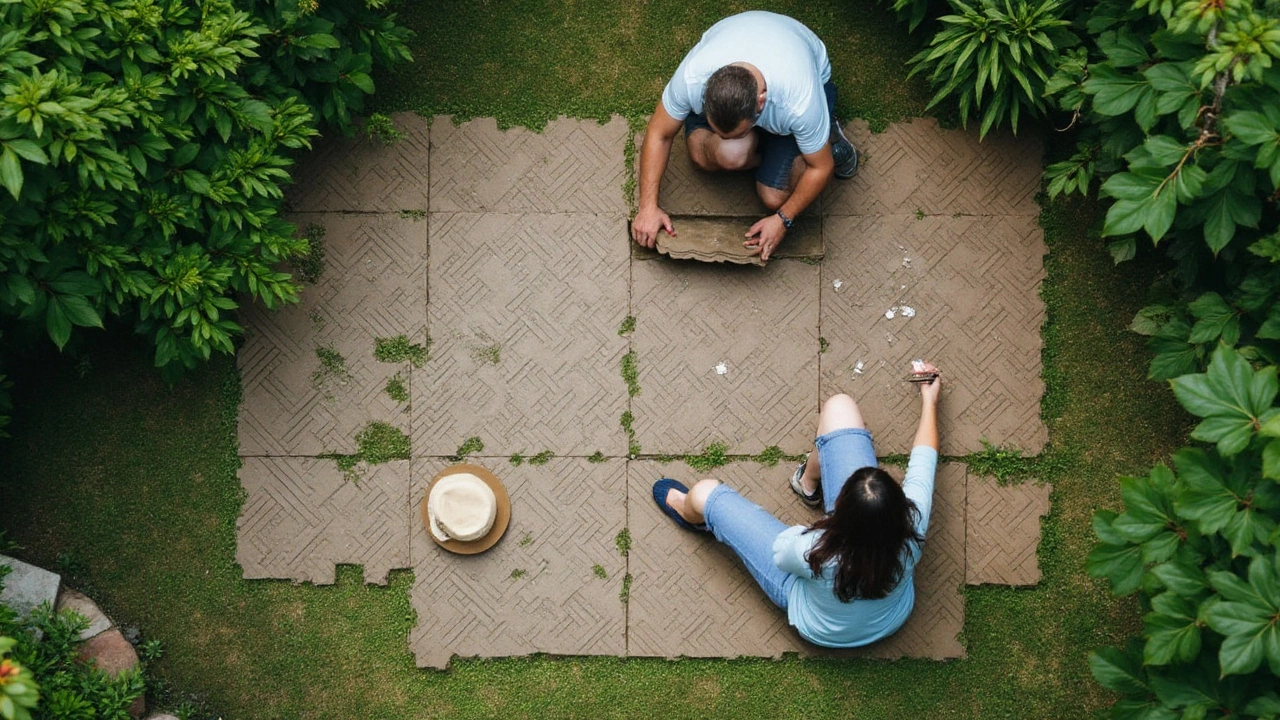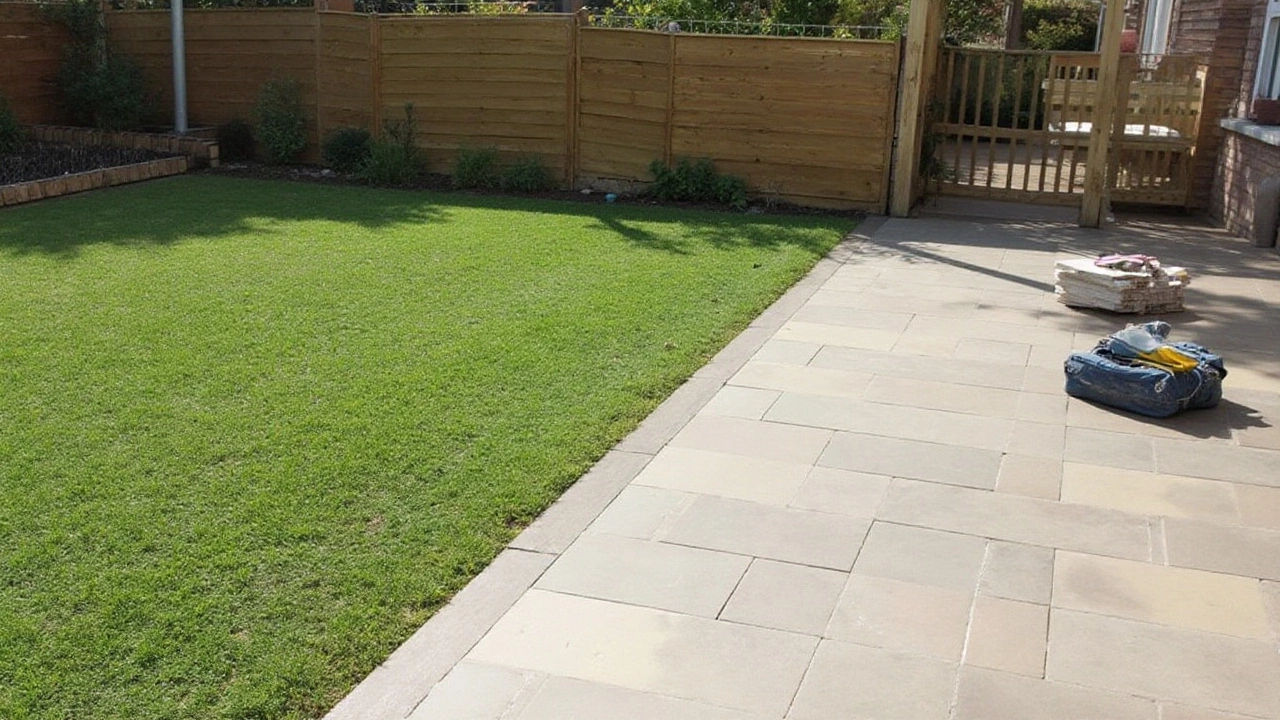
Transforming your garden into a comfortable and inviting space can be as simple as installing decking tiles directly onto the grass. This method provides a versatile and temporary solution, allowing you to create a charming outdoor area without the commitment of a permanent structure. Whether you're hosting a summer barbecue or simply want a spot for relaxation, decking tiles can offer a practical and aesthetic enhancement to your backyard.
Before diving into this project, it's crucial to understand the nature of decking tiles and the steps required to ensure a stable and lasting setup. From ground preparation to maintenance, each stage plays a role in creating a delightful outdoor escape. Staying informed about potential challenges and armed with practical tips will set the stage for a successful and enjoyable garden project.
- Understanding Decking Tiles
- Preparing Your Grass Surface
- Installation Process
- Maintenance Tips
- Creative Ideas for Outdoor Spaces
Understanding Decking Tiles
Decking tiles, also known as interlocking tiles, are a versatile and stylish option for outdoor flooring. They come in various materials such as wood, composite, and even porcelain, providing endless aesthetic possibilities for your garden space. The appeal of these tiles lies not only in their visual charm but also in their practicality. Unlike traditional decks that require significant groundwork and installation time, decking tiles can be laid with minimal preparation, making them a popular choice among DIY enthusiasts.
The mechanism of decking tiles is particularly ingenious. They are designed to snap together with an interlocking system, which means they can be easily arranged and reconfigured as needed. Whether you're looking to cover a small patio area or enclose a larger section of your garden, these tiles offer unparalleled flexibility. In terms of materials, wooden tiles often use hard-wearing timber such as acacia or teak, known for its durability and natural resistance to weather elements. Composite tiles, on the other hand, blend natural wood fibers with plastic, offering enhanced longevity and minimal maintenance.
"The beauty of decking tiles is their ability to transform any outdoor area swiftly and efficiently, without the permanence of traditional decking," says John Hayden, a renowned landscape designer.Installation is simplified not just by their design but also by their varying sizes, which can accommodate different garden layouts and personal preferences. Another advantage of decking tiles is their capacity to enhance drainage. Due to the slight elevation off the ground, water can pass through the gaps, preventing pooling and reducing the risk of surface damage during rainy seasons.
When considering outdoor flooring, it's essential to evaluate the tiles’ compatibility with your existing garden furniture. Wood and composite decks typically blend well with natural aesthetics, offering a cohesive and serene garden vibe. If you reside in an area with extreme weather conditions, choosing a material that endures temperature fluctuations without warping is crucial. Properties like UV resistance and slip resistance may also factor into your decision, particularly if the decking area is frequently exposed to sunlight or rain.
Moreover, the eco-conscious consumer would be pleased to know that many manufacturers offer decking tiles made from sustainably sourced or recycled materials, contributing to an environmentally friendly home improvement choice. To conclude, decking tiles represent a fusion of functionality and style, catering to a broad spectrum of landscape designs while ensuring that your outdoor haven remains inviting and adaptable to your changing needs.
Preparing Your Grass Surface
When you're about to lay decking tiles directly onto your grass, it's vital to start with proper preparation. Taming the lush, green ground beneath is what sets the foundation for stability and durability. Before anything else, assess the current state of your grass. It should be healthy, reasonably level, and free of overly soft spots that could make your decking tiles wobbly. Use a lawn mower to trim the grass short, ensuring that it's no longer than a couple of centimeters. A trim lawn allows the tiles to sit more directly on the ground, minimizing gaps and unevenness that could cause snags or trips.
After mowing, take time to clear away any debris or obstacles such as stones, twigs, or roots. These can lead to uneven surfaces and damage both to your lawn and your new outdoor flooring. Small handheld rakes or garden sieves are excellent for this task, helping you refine your groundwork. Once cleared, consider employing a roller to gently flatten the area, as this helps obtain a firmer, more level surface—a bit of preparation often enhances the overall structural steadfastness of your decking tiles.
One often overlooked step is nurturing the soil beneath. Adding a thin layer of weed suppressant fabric is not only smart but nearly essential. It discourages those pesky weeds from thriving in the crevices between the tiles. John Michael, an expert in garden renovations, often says,
"A little precaution can save you a world of hassle down the line. Remember, it's easier to stop the weeds now than it is to fight them later on."This approach isn’t just about defeating weeds. It also acts as a stabilizer, keeping the tiles in place when high winds roll in or during heavy foot traffic events.
When you’re satisfied with the ground’s state, it’s time to outline the area. Use stakes and twine to measure out where your tiles will go. This step sets the stage for a flawless grid alignment once you're in the throes of installation. It’s all about planning; getting these threads tight and precise can ward off future misfits. Measure twice, cut once, as they say—not that you'll be cutting grass, but understanding this maxim is key to success.
If your plot seems prone to water logging, reflect on implementing a simple drainage layer. Adding some fine gravel beneath that weed fabric can significantly improve water runoff. It's an additional step but promises longevity to your project, safeguarding it against the damp and decay. Many home gardeners might skip this, but a bit of forward-thinking often yields a lush, vibrant, and stable garden furniture setting that you'll love for years. Planning with precision and care, especially with regards to soil and water concerns, increases the grace and functionality of your outdoor haven.

Installation Process
Embarking on the journey to lay decking tiles directly on grass begins with a basic understanding of your outdoor space. These tiles offer great flexibility, so take advantage of that by marking out the area you wish to transform. Be sure to consider factors such as exposure to sunlight and water drainage. Start by mowing the grass shorter than usual, as this will help the tiles settle better into the surface. Although tempting to skip steps for speed, taking the time to prep your ground well provides the foundation for a long-lasting outdoor feature.
Once your grass is evenly trimmed, ensure it's free of debris, rocks, or sections of uneven ground. A smooth surface aids in minimizing unwanted movement underfoot. Then you may lay a geotextile fabric over the grass, which serves to maintain separation while allowing water to pass through, preventing the growth of weeds beneath your new deck. This layer acts as the unsung hero, making routine maintenance simpler in the months ahead.
With your surface prepped, it's time to start setting your decking tiles into place. Begin at one corner of the area and work your way out, connecting the tiles by their interlocking edges. A rubber mallet can assist in gently but firmly securing tiles together, especially if your ground is firm or uneven. It’s crucial to ensure there are no gaps between tiles, aiming for a snug and cohesive look that will impress guests without them realizing it wasn't professionally installed. Adjust as necessary, keeping an eye out for any wobbly or unlevel spots and addressing them immediately.
“Always remember, a deck above ground is a deck with a future.” - Mark Brown, Outdoor Design Specialist
As you proceed, periodically stepping back to check alignment will maintain your direction. The completed arrangement should be a reflection of practicality meeting aesthetics, a seamless transition from grass to platform. Should you encounter any obstacles along the way, a flexible mindset can often lead to innovative solutions, whether it involves re-arranging your design or strategizing around existing garden features.
When you’ve laid all the tiles, make sure to walk over the entire surface, testing it for any areas that might still need adjustment. The weight and pressure from walking helps settle the tiles into place. Lastly, ensure the edges are secure, as these are often where movement tends to occur. If necessary, edge restraints can be utilized to further stabilize your masterpiece. Congratulations, your outdoor flooring is now ready for many enjoyable days ahead!
Maintenance Tips
When it comes to maintaining your decking tiles laid directly on grass, it is essential to keep a few pointers in mind to preserve their appearance and functionality. First, regular cleaning is crucial, especially in outdoor environments where tiles are exposed to moisture, dirt, and organic debris. Using a soft brush or broom, gently sweep away leaves, twigs, and other materials to prevent mold and moss growth. Every few weeks, especially during seasonal changes, deploy a mild soapy solution to deep clean the tiles, ensuring that the tiles maintain their color and texture over time. Rinsing with a garden hose and allowing the tiles to air dry will complete the process, giving your outdoor space a refreshing uplift.
Besides cleaning, weekly inspections are fundamental to catch any wear and tear early, especially on the tile’s edges that can sometimes be the first to show signs of damage or lifting. Check each tile for stability and realign them as needed to avoid uneven surfaces, which could lead to tripping hazards. It's not just about aesthetics; safety is always a priority. Identifying soft spots in the underlying grass early, caused by heavy foot traffic or natural settling, and addressing them promptly by lightly compacting the affected area, can also go a long way in ensuring the longevity of your deck installation.
Weather conditions can significantly impact your decking, especially in places with variable climates. In Wellington, with its seaside humidity, regular treatment with a protective sealant designed for outdoor decks can shield tiles from excessive moisture absorption. Apply the sealant twice a year, ideally at the start of spring and at the onset of autumn, for optimum results. A simple hack is placing weatherproof furniture pads under outdoor seating and décor to distribute weight evenly and prevent tiles from sagging over time.
While day-to-day maintenance is important, seasonal care can provide that extra layer of protection. Preparing your deck for the winter months involves covering the tiles with breathable outdoor protective sheets. This shielding can help in minimizing the frost's impact, preventing unnecessary cracking and prolonging your tiles' lifespan. Once the chill abates, it's wise to re-examine the deck's condition, making sure all tiles are aligned and intact. Throw on a new coat of paint or finish if necessary to consistently revamp your space. A celebrated horticulturist shares,
"As you invest time in the upkeep of your outdoor tiles, you'll find they reward you not only with durability but with an ever-pleasuring aesthetic that charms your garden year-round."
Proper drainage is particularly imperative to tackle, especially if your garden tends to accumulate water. Installing drainage solutions underneath or adjacent to the tiled area can prohibit water pooling. Elevate the tiles slightly with adjustable support pedestals designed for decking to enhance ventilation and drainage. Additionally, consulting weather charts or apps can provide insights into upcoming conditions, helping you install temporary protective shielding during anticipated heavy rains, offering your deck the chance to dry out quicker and reducing potential water damage.

Creative Ideas for Outdoor Spaces
When it comes to reimagining your outdoor spaces, decking tiles offer nearly boundless possibilities to express creativity and style. Transforming a grassy area into a charming retreat doesn't have to be constrained by typical designs. Mix and match different textures and colors to create a personalized mosaic underfoot. The ability to swap out decking tiles according to season or occasion adds a dynamic edge to your outdoor space. Consider using natural wood tiles for a rustic touch, or opt for bright composite tiles to bring a modern flair to your backyard setup.
Creating zones can further enhance utility and beauty. Establish distinct areas for dining, lounging, or playing by varying the tile layout. You might incorporate a bold diagonal pattern beneath your dining set to draw attention, while a circular arrangement might designate a cozy reading nook. Introducing soft furnishings like outdoor rugs and cushions can soften hard lines and add warmth. Another brilliant idea is to delineate pathways or borders with pebbles or small plants, which can add texture and help define areas without major landscaping work.
Lighting can play a transformative role in crafting the ambiance. String lights or solar-powered garden lamps not only illuminate but infuse your outdoor space with an inviting glow. Installing lights beneath or around the decking tiles can create an enchanting atmosphere for evening gatherings. According to landscape designer Lisa Bartlett, "The right lighting, strategically placed, can turn a simple backyard into a magical escape with minimal cost." Such enhancements ensure your outdoor area remains a favorite spot even after the sun goes down.
Weatherproofing elements like pergolas or canopies further optimize the functional appeal of your decked garden area. These structures provide shade during hot summer days and shelter during unexpected rains, allowing you to enjoy the space year-round. Integrating plants with vertical gardens or container arrangements along the decking promotes a seamless blend with nature, offering serenity and fresh air right at your doorstep. These living walls can double as an attractive backdrop for your space, enriching the scenescape with year-round greenery and blooms.
Lastly, don't overlook the power of art and decor in elevating your garden setting. Outdoor sculptures, wind chimes, or water features can serve as focal points, enhancing the theme you wish to create. An inspiring quote or etched sign might double as a conversation starter. Get the entire family involved by crafting personalized accents, such as painted stones or homemade birdbaths, to add unique touches to your space. Through mixing artful elements with your decking tiles, your grassy patch becomes a canvas for endless inspiration.



